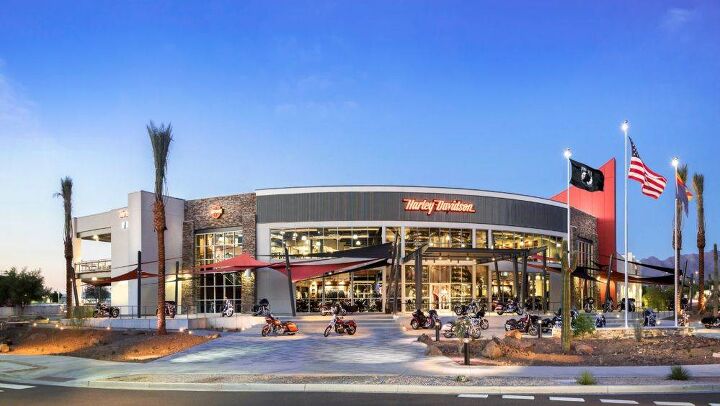Motorsports Racing News & Blog Articles
Ask MO Anything: How Important is a Big Motorcycle Dealer Network?
Dear MOby,
Like a lot of your readers, I was intrigued by that new Aprilia Tuareg 660. Also like a lot of them, I’m a little bit scared of my nearest Aprilia dealer being several hundred miles away. I mean, I wasn’t really scared until I read all the comments. Should I be worried about the dealer network so much in the modern era? Up to now I’ve only bought pre-owned Suzukis and Yamahas, and none of them has ever given me cause to go inside a real dealership.
Concerned but not worried,
Smalltown, USA
Dear Concerned,
Good question. I was just reading another post from a guy who says he’s been riding Harleys mostly for the last 30 years, largely for the peace of mind the huge dealer network gives him when he’s on the road. He went on to say that, during that time, he’d only needed the network twice – once for a flat tire, and once to bleed his brakes.
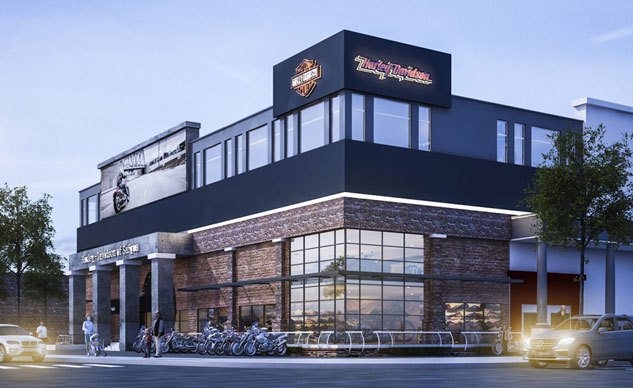
Harley opened its first dealership in Vietnam in 2013, which it said at the time was the world’s fourth-biggest motorcycle market.
Well, ahhhh… aren’t those things any motorcycle shop should be able to handle? Not to mention pretty much any old guy in a barn? In the BA era (before Amazon), you maybe needed a dealer to source the occasional part. But now that the www is here, just about any component you could conceivably need is easier to have shipped directly to your door than ever – or maybe to your independent mechanic’s door if you’re lucky enough to have a good one. Not to mention that esoteric parts once nearly impossible to find are all right there on ebay awaiting your click. Aprilia’s US network is pretty sparse, about 60 dealers in the lower 48, but it’s also on a push to do more business online via the e-commerce site it launched last March. (That’s AF1 Racing in the lead photo, in Austin, Texas – one of Aprilia’s biggest dealers.)
It’s not the ’60s anymore
Then there’s the fact that, since about the 1969 Honda CB750, every manufacturer still in business has stepped up its quality to the point where motorcycle hard parts just don’t fail anymore. You’ll always need the occasional brake lever or gas tank or drive chain, but you’re probably not going to be needing your crankshaft ground or connecting rod bearings replaced within your own lifetime. Just as I was typing that, I remembered Aprilia did recall a few hundred RS and Tuono 660s last July due to improperly heat-treated rods that might fail…
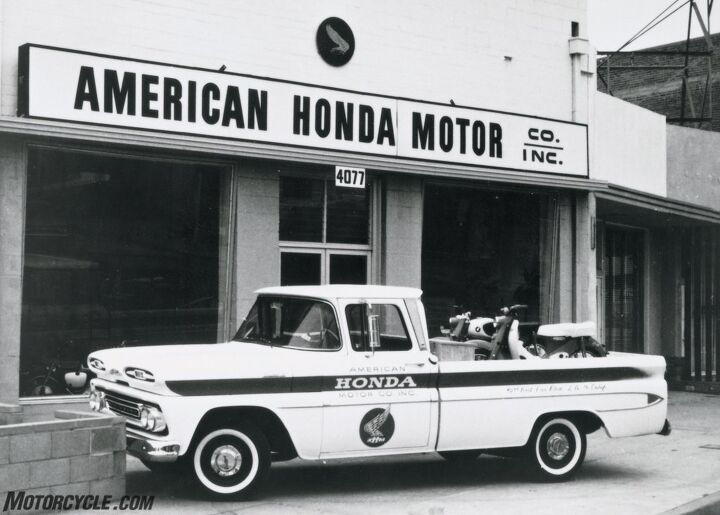
Honda spent 100,000 1959 dollars to buy the building and set up its first American Honda HQ at 4077 Pico Blvd. in Los Angeles, and had to take out a loan for the Chevy truck.
10 Things You Didn’t Know About the Honda Super Cub
What’s different and more concerning now are the electronics new motorcycles are increasingly dependent upon. Just a couple of months ago, we loved our borrowed Triumph Speed Triple R, but had to return it to the dealer to diagnose why the quickshifter wasn’t shifting? Maybe we could’ve diagnosed the faulty quickshifter unit ourselves with a cheap diagnostic tool like this one; then again maybe not.
Even more problematic is the recent trend of certain manufacturers to lock owners and independent mechanics out of their own machinery electronically: Please bring to dealer for repair and to reset annoying light.
Safety is generally the excuse given for not allowing people to do things like bleed their own brakes, and it’s a somewhat legitimate concern now that brake systems have various switchable ABS modes and linkages and whatnot. Excessive caution is even more understandable going forward, since every new sport-tourer will be having adaptable cruise control with forward and rear-facing radar. Imagine the lawsuits to come: Your Honor, my client was making himself a ham sandwich when his Ducati ran into the back of the bus…
Right to Repair
The whole right-to-repair kerfuffle may have begun with Apple making it impossible for anyone but Apple to service its gear. Lately, John Deere has become the poster child for OEM overreach: Is there anything more likely to rub Americans the wrong way than not allowing a farmer to fix his own tractor? (Rendering your tractor impossible to start after a missed payment may or may not be urban myth, but the capability is there.) A lot of the John Deere flap involves emissions standards which agricultural equipment also now has to meet; we already know what that’s all about with our cars and motorcycles.
The light at the end of this tunnel may be Executive Order 14036, which Joe Biden signed into law last July. The order, among many other things, directs the Federal Trade Commission (FTC) to draft regulations that limit OEMs’ ability to restrict independent repair of their products.
“Tech and other companies impose restrictions on self and third-party repairs, making repairs more costly and time-consuming, such as by restricting the distribution of parts, diagnostics and repair tools,” the order states, and then goes on to encourage the FTC to issue rules against anti-competitive restrictions on using independent repair shops or DIY repairs of your own devices and equipment. The goal is to make it easier to repair or refurbish through third-party firms instead of making people slaves to the manufacturer for parts and service. That may or may not happen anytime soon, depending.
Conventional wisdom
Sorry, did we get off on a tangent? Rabbit-holing down the forums for Aprilia’s new 660s seems to reveal a few electronics complaints, as usual, but aside from the above-mentioned connecting-rod problem with those 300-some units (which engines Aprilia replaced under warranty), nothing more serious than software updates. Conventional wisdom holds that you should never buy the first year anything, and in the case of the RS and Tuono 660s it seems to have been somewhat accurate. The beauty of the new Tuareg 660, you have to hope, is that Aprilia’s had a year to work out the bugs. Also, that bike’s got just enough electronics to help you out (non-adaptive cruise control!), but not all that much to go wrong (no IMU). We used to call Aprilia “the Kawasaki of Italy” due to their robust design, before the electronic era complicated things.
More conventional wisdom has it that with just about any non-Japanese brand, it’s good to have a dealer nearby. Our old friend Brian Catterson in Portland, Oregon, reports: “Our local Aprilia/Moto Guzzi dealer here in Portland went out of business two years ago, and the nearest dealer now is three hours away in Kirkland, WA. Because of that we have a hard time even selling used Aprilias and Guzzis at MotoCorsa. It’s not a big deal to ride there for your 15K service, but if your bike quits, that’s a long haul. Especially if you don’t own a truck or trailer.”
Left unsaid is how many Aprilias and Guzzis actually do “quit.” Even if barely any do, there’s a perception problem. Then too, you have to factor in the quantity of dealers with the quality of the dealer: Just because there is a dealer doesn’t mean they’re going to be much help. As our friend Grant Hellinger so eloquently states: “A dealer close by is definitely a plus, but if you have a bunch of twats working on stuff and buggering it up, it’s a moot point really, as there’s tons of dealers around for Japanese bikes but with awful reputations.”
Furthermore, it seems like the problem in some cases goes beyond the dealer. Jim Gianatsis writes:
“The dealer network is not the question to ask. A dealer is always at the mercy of their country’s distributors or the manufacturer, no matter how big or small the dealer is. I have bought new bikes and parts from Pro Italia in Glendale, CA, for 30 years, a multi-brand dealer that carries Ducati and Aprilia along with others. At one point Pro Italia dropped the Aprilia franchise for a few years because they could not get parts and good warranty processing.
“At the same time, Ducati USA and the Ducati world-wide distributor network has gotten better and better over the years. Ducati learned it was not cost-effective or manageable for each county to have its own parts warehouse. All needed replacement parts are now ordered online by the dealer, and air-shipped the following day from the Ducati factory in Bologna, to be delivered in 3-5 days. Ducati seems to always have most necessary parts to keep their bikes running going back to the early ’90s. Last week I ordered a suspension part for a ’90s Ducati Superbike. Only parts like special edition bodywork, Ducati Performance and Superleggera parts, which some owners buy to fix up their base bikes, will go out of stock quickly and not be replaced.”
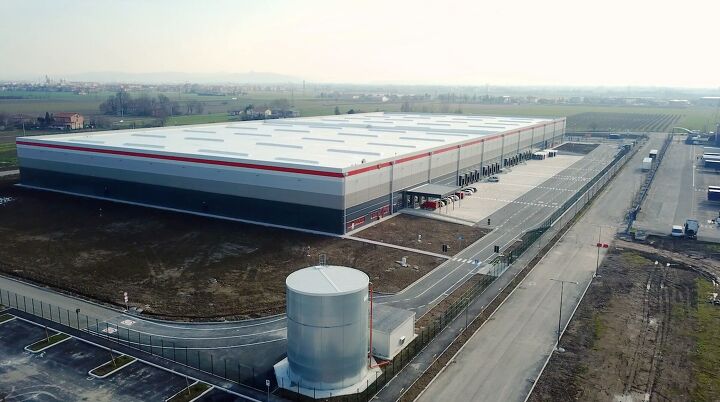
Ducati is the 800-pound gorilla when it comes to Italian motorcycles, and uses its wealth wisely: That 30,000-square meter state-of-the art parts warehouse it shares with Lamborghini just outside Bologna opened in 2018. Ducati and Lambo are both owned by Volkswagen: Italian engineering and German logistics aren’t a bad combination. Aprilia is owned by Piaggio; maybe have a glass of wine and relax. (Photo courtesy Motor Valley Association)
The Social Connection
Communing with their fellow riders is really important for some, not at all for others. You know who you are. No brand has probably benefited from group dynamics more than Harley-Davidson. Join the Harley Owners Group, collect the t-shirts!
But, as Ned Heidel points out, most Euro bike owner groups have a good network to make up for the lack of dealerships; in fact the strength of the online community often seems to be directly proportional to the lack of dealer support.
Before the www, I remember there being a book that members of the big US BMW club carried with them on the road, which had names and contact info for other club members all over the country standing by to help out in case of emergency. I imagine it still exists digitally? I imagine so does one for the Munch Mammoth. Not that you need it anymore now that new BMWs come with 24/7 roadside assistance.
As for me, nearly all my motorcycles have been borrowed and nearly 100% problem-free for a few decades. But I would not be using 20-year old Jaguars as daily drivers without benefit of JaguarForums.com, where so far every problem I’ve encountered (nothing major, knock on wood) has already been collectively figured out and repaired by the time it happens to me, and never by a dealer. Perish the thought.
At the end of the day, I wouldn’t be surprised if a new Tuareg has a few issues, but I would be surprised if any of them are the kind that leave you stranded. None of our test Aprilias ever have. I imagine they’d be annoying warning lights coming on at random that might need attention, but probably not immediately. Many of our new test bikes throw up check engine lights, usually after running them on the dyno. We generally ignore them; sometimes they go away…
Don’t worry, be happy
If I wanted a new Tuareg (and I really do, but only to borrow for a while), I don’t think I’d let the lack of a nearby dealer keep me from having one. But it’s like the stock market: Past performance doesn’t guarantee future results, and it’s all about your own risk tolerance. What I would do, in the first year or two of ownership, would be to join Triple A, and pay the $50 or so premium that covers towing your motorcycle and RV (no idea why they lump those two together). Then I’d get to know the people on the Aprilia Tuareg forum (this one’s hosted by the people at AF1 Racing in Austin, Texas, who also supplied our lead photo). I sincerely hope you won’t need either one, but both will be priceless if you do. Good luck, and be happy you’re in a place to buy a shiny new motorcycle.
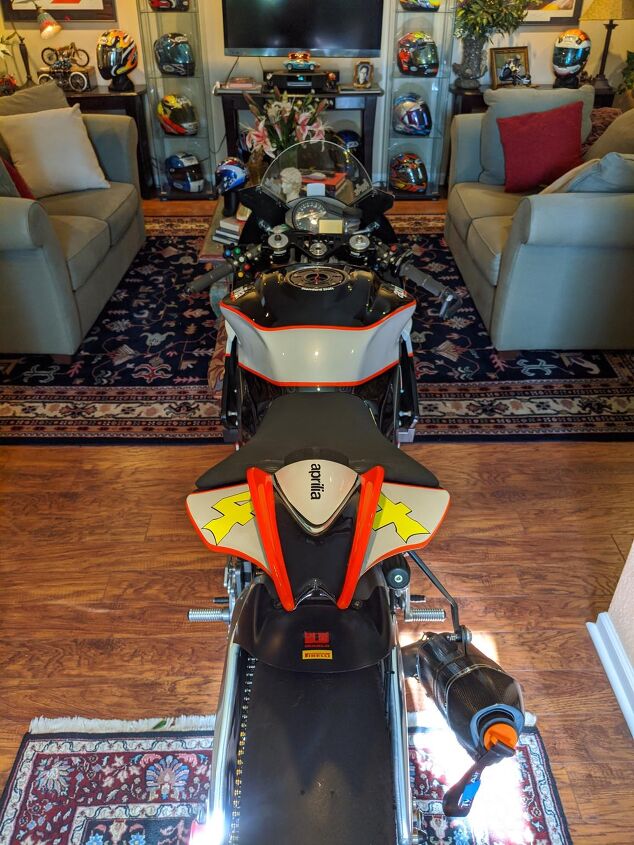
Our friend Robert Buchsbaum says he’s no longer concerned about Aprilia’s scanty dealer network now that his RSV4 racer is retired.
Related Reading:
2022 Aprilia Tuareg 660 Review – First Ride
Carmakers and repair shops clash as automation upends aftermarket
Become a Motorcycle.com insider. Get the latest motorcycle news first by subscribing to our newsletter here.
The post Ask MO Anything: How Important is a Big Motorcycle Dealer Network? appeared first on Motorcycle.com.
Copyright
© Motorcycle.com


